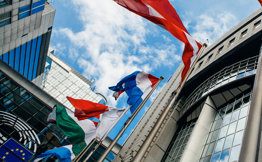A new report by the Association for Financial Markets in Europe (AFME) and The ValueExchange consultancy reveals that European Central Securities Depositories (CSDs) are significantly more expensive and complex than international peers – undermining competition, investor returns and the attractiveness of the EU for issuers and investors.
Adam Farkas, CEO of AFME, said: “European market participants face opaque CSD fee structures and excessively high post-trade costs. It is striking to see from this study that larger CSDs processing high volumes are not necessarily cheaper. Instead, the current situation keeps costs high, erodes investor returns and makes Europe a less attractive place for both issuers and investors. Policy makers have a clear opportunity in the upcoming European Commission market integration proposals to strengthen Europe’s post-trade markets by promoting competition between CSDs, standardising fee structures, and increasing transparency.”
Among the key findings:
- European settlement is far more expensive – Settlement fees in European CSDs are on average 65% higher than in North America, reducing investor returns and raising the cost of capital for issuers.
- European investors face higher settlement charges - averaging €0.38 per instruction– about €0.15 higher than the US.[1]
- Custody fees are disproportionately high – European CSD safekeeping charges are between 19% to 650% higher than in the US. Safekeeping is often the single largest invoice item, with little competitive pressure.
- Non-core fees (penalties, partials, cancellations, manual charges) can account for up to 59% of total settlement costs.
- T2S has not delivered expected cost reductions – Despite its aim to lower settlement costs, CSDs continue to add their own processing fees. As a result, settlement costs remain well above the targeted €0.15 per instruction.
- Fee schedules are opaque and inconsistent – CSD invoices range from 38 to 242-line items, with little standardisation. This makes costs hard to compare, burdensome to reconcile, and undermines transparency requirements under the Central Securities Depository Regulation (CSDR).
- High costs persist despite scale – Larger CSDs do not pass efficiencies on to users. In fact, some of the largest CSDs charge higher safekeeping and settlement fees than smaller peers.
- The Cost of Europe’s Model: As a thought experiment, if European CSDs applied North American pricing, market participants could save up to €1 billion annually – nearly 80% of current expenditure. The biggest gains would come from safekeeping, where savings could reach 96% under a North American pricing model.
The findings point to the need for more competitive pricing structures and further action to remove post-trade barriers. The study also highlights a major challenge: the lack of publicly available historical data which makes it nearly impossible to track how CSD costs and structures have evolved over time.
AFME recommends near-term, practical measures to improve transparency, reduce costs, and improve client outcomes, including via amending current CSDR transparency requirements where relevant in the upcoming market integration proposals:
- Harmonise and standardise fee schedules – Clear, accessible, and consistent breakdowns of core vs. ancillary charges.
- Transparent invoices – Costs must be easily reconcilable, with explicit separation of T2S charges and removal of duplicative or opaque line items.
- Fair treatment of all participants – No discrimination between local vs. international participants, or between brokers and custodians.
- Adequate notice periods – At least three months’ advance notice for changes to fee schedules.
- CSDs to fund system upgrades and regulatory compliance costs – Participants should not bear the cost of CSDs adapting their own systems to regulation.
- End quasi-discipline fees – Eliminate charges such as recycling fees on settlement fails, which contradict the spirit of CSDR.
- Reverse billing for reporting costs – Allow economies of scale on pass-through costs such as SWIFT charges, with full transparency.
– Ends –
[1] (Based on unweighted average calculation.)




